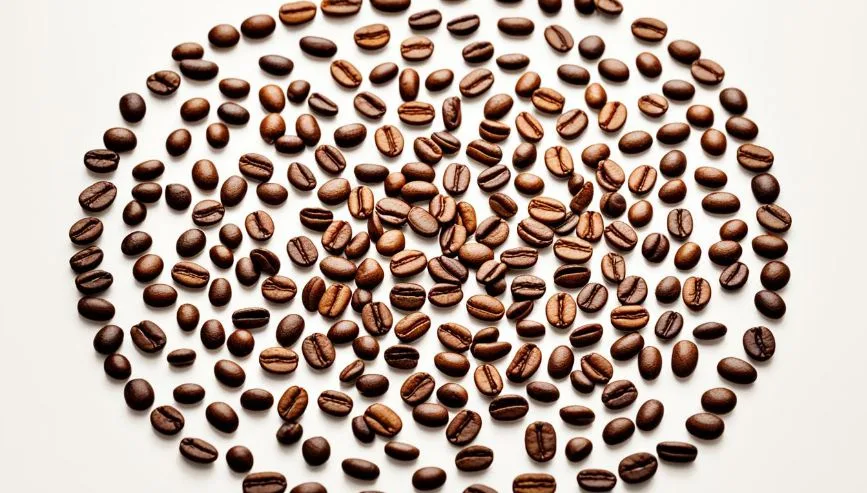The rise in cold brew coffee’s popularity stems from its ability to offer a smooth, rich flavor, ideal for warm weather. For the ultimate cold brew experience, choosing the best coffee beans for cold brew is paramount. Cold brew’s unique brewing process demands a gentle extraction, making bean quality crucial for flavor. This article explores the factors influencing cold brew and highlights the top coffee beans for an unparalleled taste.
Key Takeaways
- Cold brew coffee offers a unique flavor experience compared to traditional methods.
- Selecting high-quality coffee beans is essential for optimal results.
- Gentler extraction enhances the natural flavors of the beans.
- Understanding roast levels can affect the cold brew taste.
- Single-origin and blended beans each have distinct characteristics.
- Caffeine content varies between Arabica and Robusta beans.
- The grind size of the coffee is crucial for avoiding over-extraction.
Understanding Cold Brew Coffee
Cold brew coffee has gained traction among coffee aficionados for its distinct brewing technique and flavor. This method accentuates the beans’ sweetness, reducing acidity, and thus creating a smoother drink. Grasping the differences between cold brew and traditional iced coffee can enhance your appreciation for this invigorating beverage.
What is Cold Brew?
Cold brew coffee involves steeping coarse coffee grounds in cold or room-temperature water for a prolonged period, usually 12 to 24 hours. This method allows for a slow extraction, which brings out the coffee’s flavors without the bitter notes typical of hot brewing. Consequently, cold brew is known for its rich, full-bodied taste, highlighting the beans’ natural sweetness.
How Does Cold Brew Differ from Iced Coffee?
The main difference between cold brew and iced coffee is their brewing processes. Iced coffee is brewed hot and then chilled, whereas cold brew employs cold water from the outset. This results in a smoother flavor and reduced acidity in cold brew. Moreover, how cold brew differs from iced coffee impacts caffeine levels, with cold brew often containing more due to its longer steeping time. Here’s a quick comparison:
| Feature | Cold Brew Coffee | Iced Coffee |
| Brew Temperature | Cold or Room Temperature | Hot |
| Brewing Time | 12-24 hours | 5-10 minutes |
| Acidity | Lower | Higher |
| Caffeine Content | Higher | Lower |
Related Article: Top 10 Fat-Free Foods
Why the Right Coffee Beans Matter
The selection of coffee beans is paramount in creating the perfect cold brew. The beans’ quality directly influences the beverage’s flavor. Opting for high-quality beans leads to a richer, more enjoyable taste. Conversely, inferior beans can introduce bitterness or acidity.
Impact of Bean Quality on Flavor
High-quality coffee beans significantly elevate the coffee’s flavor. Freshly roasted beans with distinct flavors enhance the taste experience. The bean’s origin, processing, and roast level all shape its flavor profile. For example, Ethiopian beans offer fruity and floral notes, while Colombian beans introduce nutty and caramel flavors.
Extraction Process of Cold Brew
The cold brew extraction process stands out from traditional brewing. Coffee beans steep in cold water for 12 to 24 hours. This slow process allows full flavor and oil development, resulting in a smooth, rich brew. The long steeping time highlights the importance of bean quality, as only superior beans produce desirable flavors.
| Type of Coffee Beans | Flavor Notes | Recommended For Cold Brew? |
| Arabica | Smooth, Complex, Fruity | Yes |
| Robusta | Strong, Bitter, Earthy | No |
| Single Origin | Unique, Distinctive | Yes |
| Blends | Balanced, Varied | Yes |
Best Coffee Beans for Cold Brew
Choosing the right coffee beans for cold brew requires knowledge of their characteristics. Ideal beans for cold brew are those with low acidity, resulting in a smoother taste. Darker roasts add depth, while single-origin coffees reveal unique flavors. Here, we explore the key traits and top coffee brands for cold brew lovers.
Characteristics of Ideal Cold Brew Beans
- Low Acidity: Crucial for a smooth, enjoyable taste.
- Rich Flavor Profile: Darker roasts bring out deeper flavors, perfect for cold brew.
- Single-Origin Options: These highlight unique tastes from specific regions.
Recommended Brands and Their Profiles
| Brand | Highlights | Flavor Notes |
| Purity Coffee | Organic and mold-free | Rich and chocolatey |
| Fabula | Direct trade, sustainable | Nuts and caramel undertones |
| Kion | Focus on health and productivity | Bright fruit and floral notes |
| Kicking Horse | Premium, high-quality beans | Spicy and smoky |
Roast Level Considerations
The choice of coffee roast levels is crucial for the flavor of cold brew. Whether you prefer light, medium, or dark roasts can greatly impact the taste. Each roast level brings unique characteristics, making it vital for coffee lovers to know their preferences.
Choosing Between Light, Medium, and Dark Roasts
Light roasts offer a bright, lively flavor, often highlighting the beans’ natural acidity. This acidity can add a refreshing quality to cold brew. Medium roasts balance the brightness of light roasts with deeper, richer notes. Dark roasts, however, bring boldness and richness, appealing to those who want a strong flavor in their cold brew.
Flavor Profiles Associated with Roasts
The flavor profiles of cold brew rely heavily on the chosen coffee roast levels. Here’s a breakdown of what to expect:
| Roast Level | Flavor Profile | Acidity Level |
| Light | Floral, fruity, bright | High |
| Medium | Balanced, nutty, chocolatey | Medium |
| Dark | Bold, smoky, rich | Low |
When selecting light, medium, or dark roasts for cold brew, think about how these flavors will mix with the cold steeping process. The right roast can elevate the smooth, sweet, and rich notes desired in a perfect cold brew.

Single Origin vs. Blended Beans
Coffee enthusiasts often find themselves at a crossroads when choosing between single-origin and blended coffee beans. Each type offers distinct qualities and flavor experiences suited to individual tastes. Delving into the merits of single-origin coffee and the varied profiles of blended beans can deepen one’s appreciation for this cherished drink.
Benefits of Single-Origin Coffee
Single-origin coffee, hailing from a single region, brings forth unique flavor notes that reflect the terroir of that locale. For example, Ethiopian beans exhibit fruity floral aromas, while Colombian beans may display a sweet caramel taste. The advantages of single-origin coffee are numerous:
- Unique Flavor Profiles: Each region’s distinct characteristics allow for a diverse array of tastes.
- Traceability: Knowing the origin of beans enhances transparency in sourcing and supports sustainable farming.
- Freshness: Single-origin coffees, often from smaller batches, guarantee optimal freshness.
Exploring Blended Bean Varieties
On the other hand, blended coffee beans merge beans from various origins to craft a balanced flavor profile. This approach enables roasters to refine strengths and weaknesses, resulting in a consistent taste. The blending process can create harmonious flavors that many coffee drinkers find appealing. The benefits of blended beans include:
- Balanced Flavor: Blends can neutralize unpleasant tastes by combining different beans.
- Consistency: These coffees offer a dependable flavor experience across different batches.
- Versatility: Ideal for cold brew, blended beans adapt to various brewing methods and taste preferences.
| Aspect | Single Origin Coffee | Blended Coffee Beans |
| Flavor Profile | Unique and region-specific | Balanced and harmonious |
| Source | One specific region | Multiple regions combined |
| Freshness | Typically fresher, small batches | Consistency over batches |
| Traceability | Easily traceable back to the source | Less transparent due to blending |
Caffeine Content: Arabica vs. Robusta
Understanding the caffeine content of coffee beans is crucial when evaluating coffee. The debate between Arabica and Robusta highlights differences in caffeine levels and flavor profiles. This section explores the unique characteristics of Arabica and Robusta beans, explaining what sets each apart.
Properties of Arabica Beans
Arabica beans are renowned for their smooth, sweet flavor, making them a top choice for various coffee drinks, especially cold brew. They generally have lower caffeine levels, averaging 1.5% to 2.5%. This lower caffeine content contributes to their milder taste. The key features of Arabica include:
- Sweet, soft flavor
- Lower acidity compared to Robusta
- More aromatic with a wide range of flavors
Understanding Robusta’s Strength
Robusta beans, in contrast, are distinguished by their robust, bitter taste and higher caffeine levels, typically between 2.5% and 4%. Their strong nature makes them less popular in cold brew but attractive for those seeking a caffeine boost. Robusta beans are characterized by:
- Bitter and earthy taste
- The higher caffeine content of coffee beans
- Thicker crema when brewed, often preferred in espresso
The contrast between Arabica and Robusta sheds light on the diverse preferences in coffee, particularly regarding caffeine intake. These fundamental differences help consumers in making informed choices about their coffee preferences.

| Characteristic | Arabica | Robusta |
| Caffeine Content | 1.5% – 2.5% | 2.5% – 4% |
| Flavor Profile | Smooth and sweet | Bitter and earthy |
| Acidity | Lower | Higher |
| Aroma | Aromatic with diverse flavors | Less aromatic |
Grind Size for Cold Brew
The grind size of coffee is crucial for a perfect cold brew. Getting the right grind can greatly enhance the flavor and overall experience. Cold brew enthusiasts prefer a coarse grind, which ensures optimal extraction and avoids bitterness.
Why Coarse Grind is Essential
A coarse grind is vital for cold brew due to its long steeping time. It balances rich flavor extraction, preventing over-extraction. Larger particles dissolve slowly, resulting in a smooth, mild flavor that cold brew fans adore. This method brings out the subtle notes of the coffee beans, making for a delightful drink.
Avoiding Over-Extraction
Using a finer grind can lead to over-extraction in cold brew, resulting in bitterness. Smaller particles release bitter compounds, altering the coffee’s intended taste. A coarse grind helps avoid this, delivering the full, balanced flavor of cold brew. It ensures a pleasant drinking experience, enhancing the enjoyment of the coffee.
Top Cold Brew Coffee Beans You Should Try
When exploring the realm of cold brew coffee beans, three standouts emerge with their unique flavors and potential. These beans not only enrich the cold brew experience but also cater to diverse taste preferences. Each selection offers a distinct twist, capable of elevating your homemade brew significantly.
Colombian Supremo
The Colombian Supremo is a top choice for cold brewing, celebrated for its rich chocolate and caramel flavors. It delivers a balanced cup with moderate acidity, ideal for those who prefer a smooth, flavorful drink without excessive bitterness. Its versatility makes it pair well with milk, cream, or enjoyed black.
Ethiopian Yirgacheffe
Ethiopian Yirgacheffe is renowned for its fruity and floral notes, offering a refreshing cold brew experience. This bean’s brightness and complex flavor create a cup that’s perfect for any time of day. It strikes a balance of sweetness and acidity, making it a top choice for those seeking a brighter, more aromatic brew.
Brazilian Cerrado
Brazilian Cerrado completes the trio, known for its bold and rich taste. With notes of chocolate and nuts, this bean adds a well-rounded profile to cold brew. Its robustness provides a satisfying depth, ideal for those who enjoy a hearty, smooth cold brew.
FAQ
For cold brew, choose high-quality, medium to dark roasts for a smooth, rich flavor. Consider Colombian Supremo, Ethiopian Yirgacheffe, and Brazilian Cerrado. Each offers distinct tastes perfect for cold brew.
A coarse grind is crucial for cold brew to avoid over-extraction and bitterness. Aim for a texture like bread crumbs for the best flavor without unwanted bitterness.
Single-origin beans come from one region, showcasing unique flavors. Blended beans mix beans from various regions for a balanced taste. Your preference will guide your choice.
The roast level greatly affects the cold brew flavor. Medium to dark roasts offer a smooth, bold taste. Light roasts can be more acidic. This knowledge lets you tailor your brew.
Yes, opt for organic beans for cold brew for their quality and lack of harmful chemicals. Purity Coffee offers organic, mold-free beans that elevate your brew.
Indeed, cold brew has more caffeine than other methods due to longer steeping. It’s a top choice for those seeking a caffeine boost.
For cold brew, consider Purity Coffee for its organic beans, Fabula for varied roasts, and Kicking Horse for outstanding flavor. These brands offer top-notch beans for brewing.








